Are 3D Mario Games Getting Shorter?
I purchased Super Mario Odyssey on April 16, 2017 on pre-order.
The game arrived on October 28th, 2017.
I completed Super Mario Odyssey on October 28th, the same day.
This is going to be a different review than others. I’m going to look at gameplay elements from Super Mario 64, Super Mario Sunshine, and Super Mario Galaxy in order to compare and contrast them with Odyssey.
The question I’m going to try and answer is: how was I able to beat Mario Odyssey in a single day? 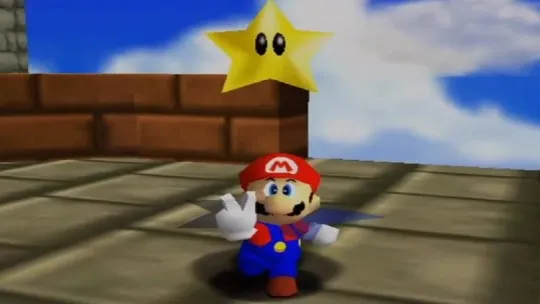
Beating 3D Mario Games
I think to start, we need to look at what “beating” a game really means these days. In Super Mario 64, you could complete the game’s story with a minimum of 70 stars (assuming you’re not using speedrunning strategies). But there were 120 stars in total, giving you a special ending.
Mario Sunshine on the other hand, used a few key objectives in all levels (Shadow Mario fights) as the requirement to advance to fighting Bowser, where at a minimum you could get away with about 50 Shinesprites. There is a brief special screen at the end for getting all 120 Shinesprites in this game.
In Galaxy, you need a minimum of 60 stars to fight Bowser. However when you collect all 120 stars, you need to fight Bowser again, and then you unlock Luigi, and are challenged to complete the game all over again with slightly different placements of stars.
So for this review, we’ll consider “beating” a game completing it’s main story. What’s funny is in Super Mario Odyssey, the game continues its story after the main story, which occurs after you collect a bare minimum of 124 Moons, so it’s a bit different than the other games in that regard. I won’t go into it much but there are well over 500 Moons you can collect in this game. And to avoid spoilers myself, I haven’t looked into what happens after you unlock that new world post-completion of Odyssey, but I assume there is more based on how the story is continuing. This means the barrier to completing the story is much less strenuous to complete since there aren’t as many bottleneck events that could hold you back from continuing the game’s story. With so many potential paths you can take to beat the game, this would be mark 1 of why Mario Odyssey might feel like a shorter game.
Completing Objectives in 3D Mario Games
So now we’ve established a baseline for how each game is “completed,” we’ll look at the basic means of beating each game: completing objectives.
In Mario 64, each level had 10 objectives, each awarding you a star. Depending on which objective you selected, the level would adjust itself to make obtaining that star possible. In some instances, you could obtain an objective’s star without “unlocking” it per say, if the world allowed you to access while pursuing a different objective. This meant some multitasking was available, but it was a fairly rare occurrence. The 100 coin star for example would actually let you continue playing and not exit the level like most stars would. In fact, you have to enter/exit levels in Super Mario 64 at least 9 times each if you wanted to obtain all of the stars.
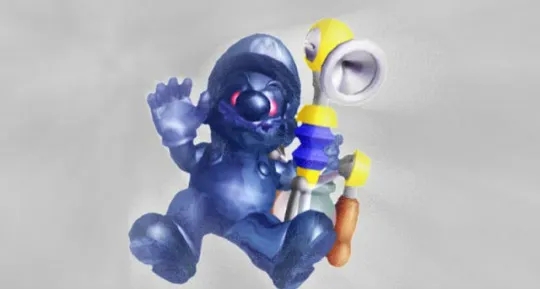
Mario Sunshine is in a similar boat, with even less flexibility to explore other objectives along the way. Depending on which Shinesprite you were trying to obtain, the world could drastically change, even isolating only certain parts of it for you to play on until you collected that sprite. The first star/objective in the Hotel Delfino level, for example, was particularly tough, and took place outside of the hotel, which meant that if you weren’t able to collect that first star/complete that first objective, you could not explore any other part of the level.
Mario Galaxy was even more restrictive, with specific pathways being paved per level depending on which objective/star you were trying to obtain.
In Mario Odyssey, it turns everything on its face in this regard. When you collect a Moon, typically the game lets you continue from where you left off to collect other Moons and explore the level further. Moons are often a lot more commonplace than collectibles in the previous games. When I completed Odyssey’s story I had about 140 Moons, with many objectives not completed. This means the flexibility is at its max, allowing you not only to multitask, but even skip some boss battles which award you multi-moons if you collect enough secrets along the way. This could be another sign why Mario Odyssey might feel shorter than the other games - its potential efficiency in completing objectives. The game is not bloated by having to continually exit and enter levels.
Hubworlds in 3D Mario Games
Next let’s talk about the hubworld/lack thereof in these games. Mario 64 had the memorable Peach’s Castle, which served as one of the most beloved hubworld of any video game in history. There were even objectives to complete in the hubworld itself, which made exploring it even more fun.
In Mario Sunshine, the hubworld was also well loved, and it expanded on the special events in the hub world from 64, by offering new objectives to complete that even coincided with the main story.
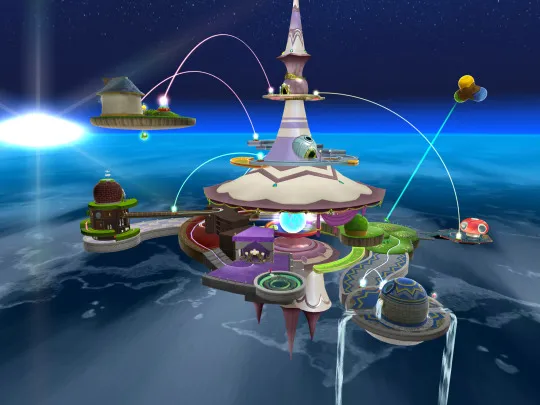
In Mario Galaxy the hub world similarly to how it did in both previous installments. In Galaxy 2 they got rid of the hub world entirely, which had mixed reception, but it meant there were no barriers to getting from one level to the next.
Mario Odyssey decided to nix the hubworld also. But in its place, each world feels like a sandbox environment, which fulfills the desire the hubworld instilled of exploration, while at the same time not creating arbitrary barriers from one level to another. As soon as you unlock one, you can go there. You don’t need to complete a puzzle or walk to the other end of a building to get there. Yet another reason why Mario Odyssey may feel like a shorter game - it’s more direct method to go from level to level rather than use a hubworld.
Level Design in 3D Mario Games
This segways into our next topic, level design. Mario 64 levels felt vast and open, and capitalized beautifully on the then-new 3D environments gamers could experience. You could go pretty much wherever you wanted, and thanks to the game’s controls, it felt like a playground of exploration. However, in order to get from one side of a level to another to get that next star, you essentially had to go over the same paths over and over again just to get to that location.
In Mario Sunshine levels were a bit more limited in scope depending on what your objective was, but not much. Levels were even larger than in 64 in some cases, and you had F.L.U.D.D. to help support platforming. Although I still can’t decide if F.L.U.D.D. feels more like a crutch or an aid to the game in that respect. This more direct approach often cut time of walking over to the objective, but not always. Sometimes you had to walk on the same paths over and over again.
In Mario Galaxy, the levels are very linear. Depending on which objective you chose to pursue, your path was very direct and the options of exploration essentially boiled down to turning a corner or finding a hidden pipe. In this respect, Mario Galaxy feels like a puzzle game more than an adventure game. But it wastes no time in getting you on the correct path, meaning there is little to no redundancy in travel time.
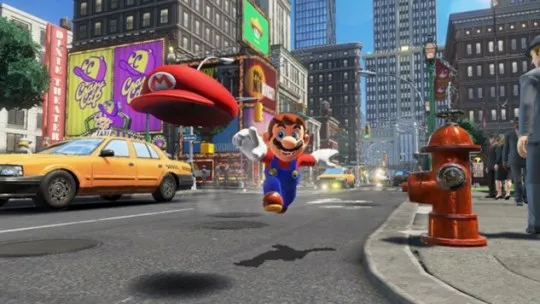
Odyssey levels are virtually completely open. There are no equipment or “new move” barriers, meaning you’re never relying on some power up, special equipment, or unlearned move to use in order to advance. The one exception would be objectives you can unlock depending your attire. If you want to reach somewhere, it’s practically all accessible. You just need to find the correct enemy to “capture” (i.e. possess and use their abilities), flip the proper switch, or perform the correct set of moves. That being said, with the early objectives, they do help guide you along to what objectives will help you move forward with the game’s story, but you’re mostly free to obtain whatever objective you want along the story objectives. Not only that, when you capture flags in certain areas of the level, you essentially create warp points so you can easily visit that area of the world again. Warp points in levels drastically speed up maneuvering through the game, which could also contribute to why Odyssey seems short.
Controls in 3D Mario Games
Next the controls. I won’t go into detail about each game, but Mario Odyssey manages to capture the best parts of each previous installment’s control options on even less buttons (this works with using a JoyCon on its side!). I will say a few of the moves, particularly the air dive, feel a little convoluted, but for the most part this is perfected 3D Mario controls. His movement feels responsive, agile and flexible, which is exactly what you need in a Mario game. He has the long jump/triple jump/back flip/etc. from 64, the dive and spin jump from Sunshine, and a slew of new moves like rolling, squat jumping, and of course the hat throw. You also don’t take fall damage, so you never get punished for moving quickly and boldly. Capturing enemies means you can experience brand-new character playstyles at any given moment to accomplish something more specific more easily. The controls in Odyssey deserve the highest praise! This could be another reason Mario Odyssey feels shorter - you can literally move more quickly.
Boss Fights in 3D Mario Games
Boss battles vary in each game also. I would say the biggest differentiation between them is how many “hits” Mario can take. In 64 and Sunshine, Mario could be hit 8 times before he died. In Galaxy, it significantly decreased to 3, sometimes 6 if the game decided to give you that option. Odyssey adopted a similar health ethos to Galaxy in that way, with mostly 3 hits but sometimes 6 hits until death. As a result, bosses had to either be easier or more predictable from 64 and Sunshine since you had a higher likelihood of dying with less health to work with. For the most part, fighting a boss in Odyssey means “identify its pattern, capitalize on its mistake, and then punish by hitting its weak point 3-4 times,” not dissimilarly from NES/SNES era Mario games (also Mario Galaxy), and I don’t think that’s a bad thing. At its worst, boss fights in video games are tedious and frustrating. At their best, they keep you engaged and give you a sense of accomplishment when you defeat them, and I think Odyssey achieves that. Having you wait for a 5th or 6th cycle doesn’t do much to improve the boss fight experience - it just adds another arbitrary time of waiting. Boss fight momentum and straightforwardness also contributes to why Odyssey feels shorter.

So far we’ve discussed each game’s requisites to be beaten, ability to multitask while completing mainline story objectives, lack or inclusion of a hubworld, level design, controls/movement, and boss fights. In each respect, Mario Odyssey wins out as the most flexible option. All of these factors probably explain the outstanding pace of the game - you just keep moving. It probably took me around 7 or 8 hours to beat the game’s story - but I was enthralled the entire time, and there is still a lot more to do and discover. 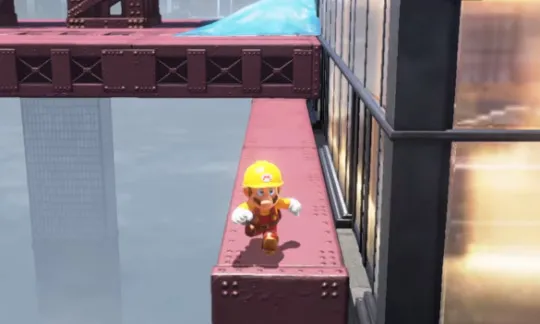
Collectibles in 3D Mario Games
The last element I want to talk about are how Nintendo dealt with Odyssey’s coins/non-Moon collectibles. I think Nintendo realizes that “beating” games doesn’t mean the same thing as it used to. In Odyssey, you don’t even possess lives anymore, upon death you lose coins. Nintendo’s adopted the idea that people love getting SWAG and vanity items with special references, which may be some of the reasons for the special costumes / ship details you can purchase with in-game currency. For the first time in a while, collecting coins in a Mario game truly felt like a means to an end - one that I care about. I actually want to purchase the special costumes and stickers, not get coins to get more lives that don’t really make sense for modern video games anyway. In the NES era - losing lives meant you would have to start the game over. In today’s massive scope for video game stories and worlds, the breadth is typically too great to simply say “alright, you lost your lives, start over from the beginning.” So removing the arbitrary “start over from the beginning of the level” to a “start over from this spawn point” would be another reason why this game probably feels shorter.
Final Thoughts
To get to the review part of this analysis - there really isn’t anything I can contribute that hasn’t already been said. This game is an absolute delight. The story, characters, controls, level design, music, graphics, and game objectives are excellent. It’s a masterful mix of core Mario 64 gameplay with Mario Sunshine cinematics/polished atmosphere and Mario Galaxy’s scope and accessibility, plus a brand new layer of mechanics and objectives that make the game feel fresh. It’s chalk-full of references from other Mario series games from 1981 until today. There are so many awesome Easter eggs and rewards that you will not want to put this game down once you start playing it.
All-in-all, Super Mario Odyssey is a dazzling modern 3D Mario game that manages to satisfy the itch all the Super Mario 64 fans have been waiting for while also providing an abundance of brilliant net-new experiences. Whether it feels shorter or not matters less than how each minute felt packed with excitement, wonder, and adventure.
What are you waiting for? Buy this game.
